Hey all! Real Farmer Jeff here.
A Tomato Hornworm (pictured below) is a large green caterpillar that feeds on tomato plants and later transforms into a moth that lays eggs, continuing the cycle of garden damage. They’re one of the most infamous pests for home gardeners, especially those growing tomatoes, peppers, and eggplants.
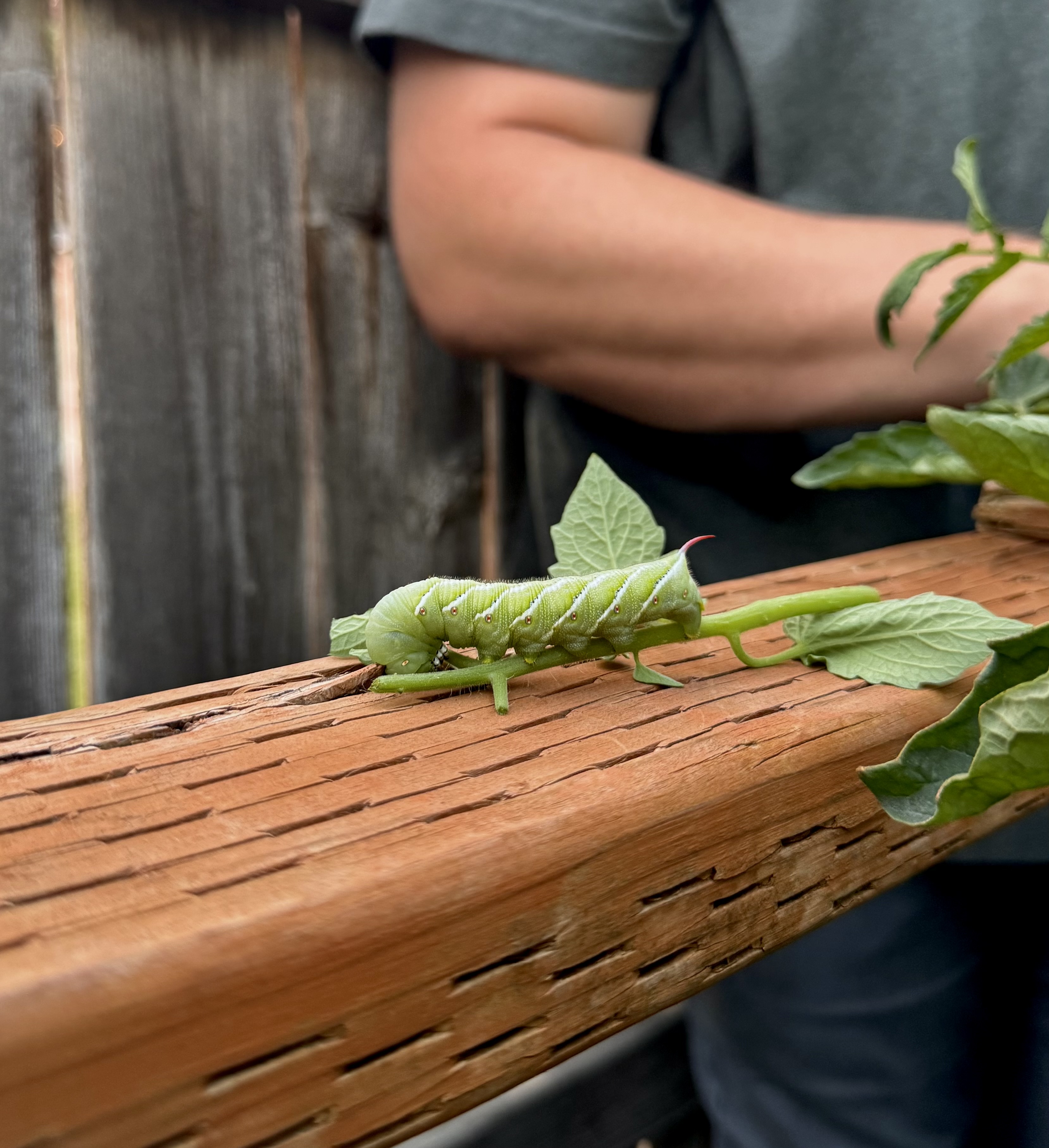
In this blog post, I’ll touch more on what exactly Tomato Hornworms are, the damage they can cause, and how you can eliminate them from your garden.
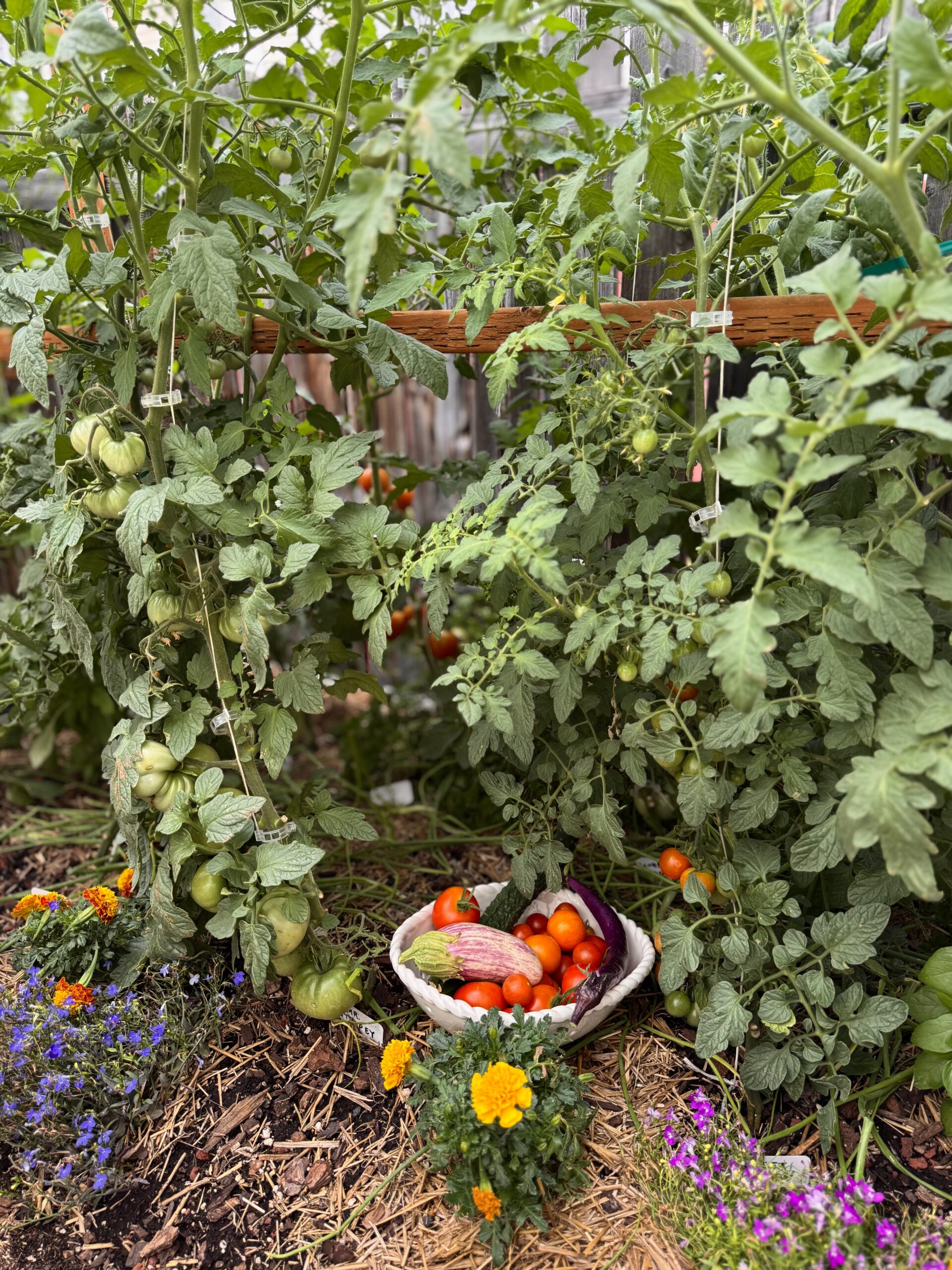
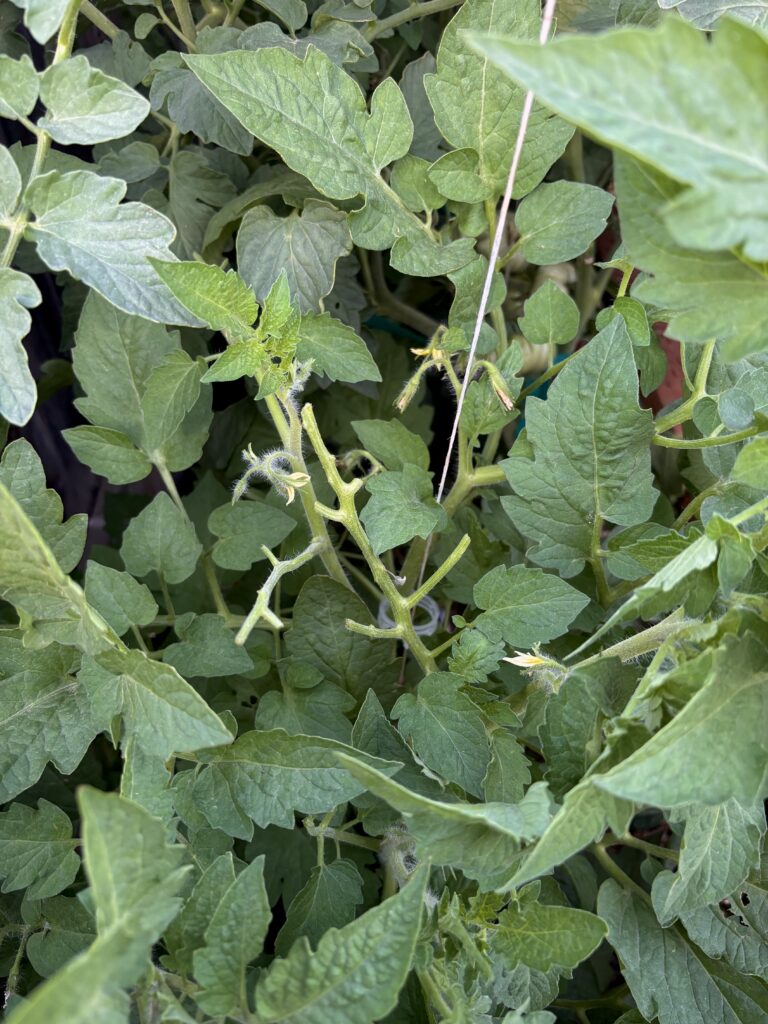
The Extent of Damage Tomato Hornworms Can Cause
These caterpillars can quickly defoliate tomato plants by munching on leaves, stems, and even the fruit itself. A single large Tomato Hornworm can consume an entire tomato plant’s foliage in just a few days, weakening the plant’s ability to photosynthesize and leaving them vulnerable to other stresses like sunscald and disease.
Because they blend well with tomato foliage, Hornworms often go unnoticed until the damage is extensive, making them especially destructive.
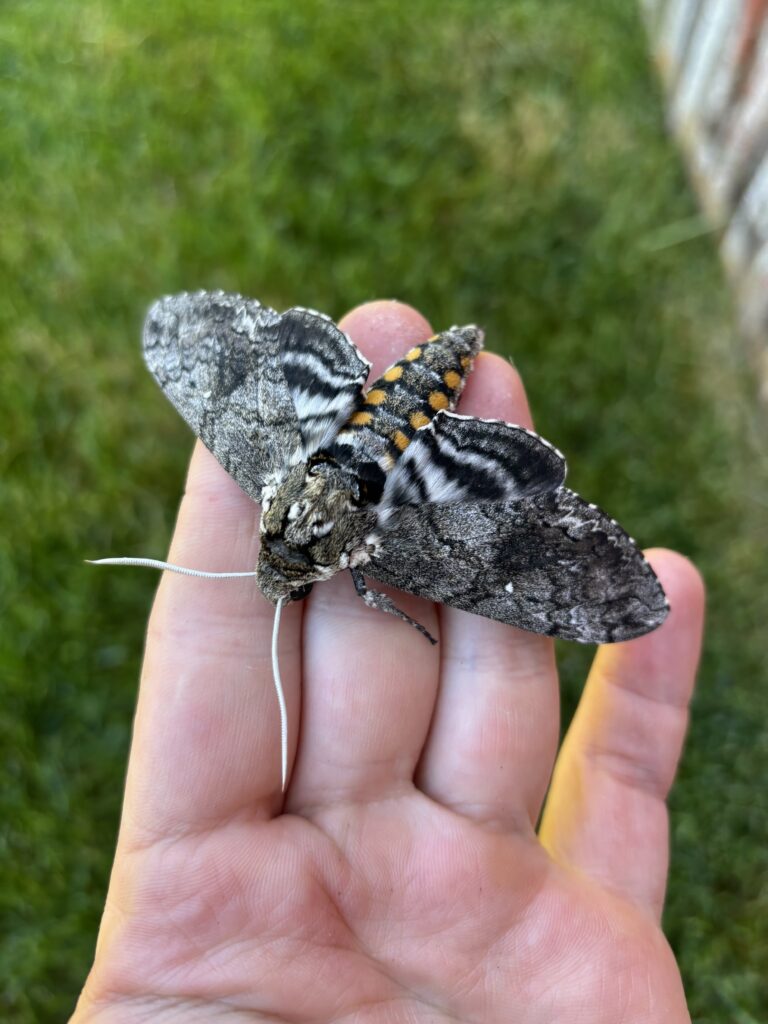
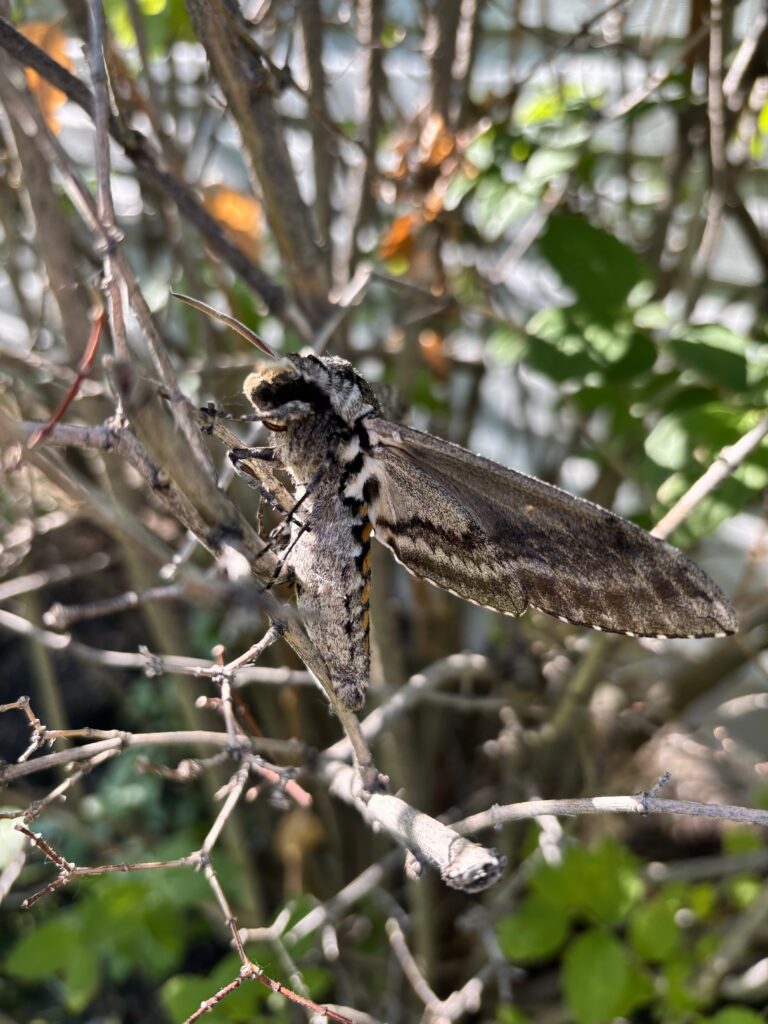
Life Cycle of Tomato Hornworms
Tomato Hornworms start life as eggs laid on the undersides of leaves by the adult moth, commonly known as the hawk moth or sphinx moth. Here’s a quick breakdown of their life stages:
- Egg Stage: Females lay about 100 to 200 eggs per season, often on the underside of tomato leaves. During their peak egg-laying period, a single female moth can lay approximately 20 to 30 eggs per day. The eggs hatch in about a week.
- Larval Stage (Hornworm): The larvae are the caterpillars that feed on your plants. They grow rapidly through five to six instars (growth stages), shedding their skin as they get larger. Early instars are small and less noticeable, but later stages are large green caterpillars with distinctive horn-like projections on their rear ends.
- Pupal Stage: After the larval feeding period (3 to 4 weeks), the Hornworm burrows into the soil and pupates. In many regions, these pupae will overwinter in the soil, surviving cold temperatures to emerge as adult moths the following spring.
- Adult Stage (Hawk Moth): The adult moth emerges roughly two weeks later. These moths are large, strong fliers, typically active at dusk and nighttime.
Hawk moths have a strong sense of smell and are attracted to the scent of tomato foliage and related plants. They also use visual cues and plant chemicals to locate ideal sites for laying eggs. Thanks to their powerful flying ability, they can travel several miles (up to five miles or more) in search of suitable gardens or wild host plants, making them adept at finding even isolated tomato patches.
Identifying Tomato Hornworms
Spotting these pests early is crucial. Fortunately, they can be identified by:
- Their large size and bright green color with white and black markings
- The characteristic horn on their rear end
- Damage to leaves and fruit that looks like chunks missing
A useful nighttime identification tool is a black light. Tomato Hornworms illuminate under UV light, making them easier to spot after dark when they are most active. Note that this only happens when the Hornworms are in their last two instars. In other words, the smallest Hornworms won’t light up.
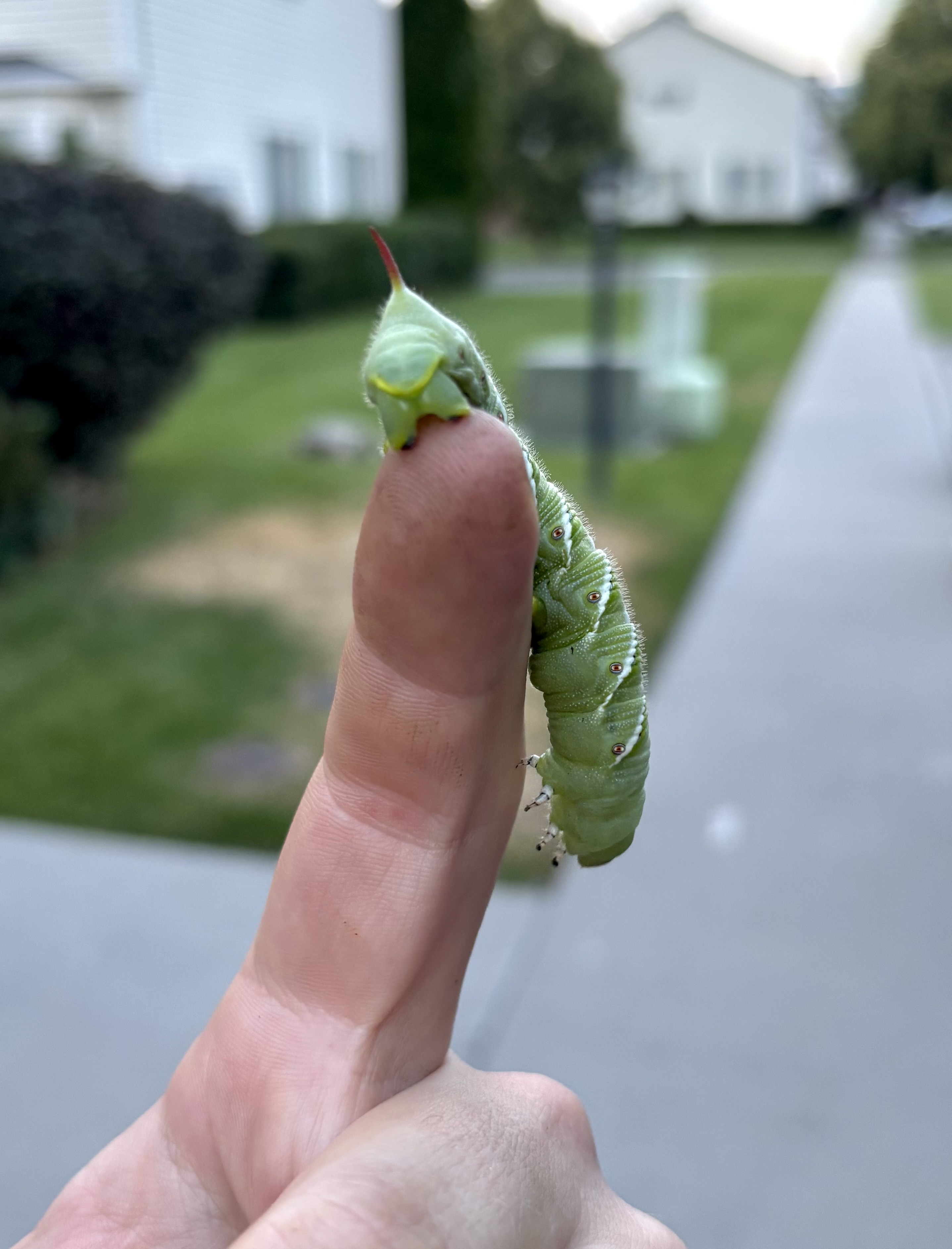
Ways to Get Rid of Tomato Hornworms
There are several effective control methods:
- Handpicking: The simplest and most eco-friendly method is to inspect plants regularly and pick off Hornworms by hand. Early detection is key, and dropping them into soapy water will kill them.
- Bacillus thuringiensis (Bt): Bt is a naturally occurring bacterium used as a biological pesticide. When Hornworms eat Bt-treated leaves, the bacteria kill them without harming beneficial insects, pets, or humans.
- Pros: Safe for organic gardening and selective pest control
- Cons: Must be ingested by larvae; repeated applications may be necessary
- Natural Predators: Encouraging predators like parasitic wasps, ladybugs, and birds can help control Hornworm populations. Parasitic wasps often lay eggs inside Hornworms, which eventually kill the caterpillar.
- Chemical Insecticides: While effective, chemical controls should be used as a last resort because they can harm beneficial insects and pollinators.
How Hard Are Tomato Hornworms to Exterminate?
Tomato Hornworms can be challenging to control because of their rapid growth, camouflage, and reproductive capacity. However, with regular garden scouting, early handpicking, and integrating biological controls like Bt and natural predators, you can keep them under control without harsh chemicals.
By combining vigilant monitoring, manual removal, biological controls, and habitat encouragement for natural enemies, you can protect your tomatoes and enjoy a healthy, productive garden.
Thanks for reading along, guys! If you enjoyed this blog post, check out my other gardening blog posts:
- How to Start a Garden on a Budget for Under $100
- Essential and Nice-to-Have Garden Products for Your Perfect Setup
- My Garden Setup: 3 Best Garden Containers for Every Gardener
- Understanding Garden Light and Shade: A Simple Guide
- How to Build a Homemade Trellis Using Cattle Panel
Follow me on social media for daily content and instructional videos about gardening!





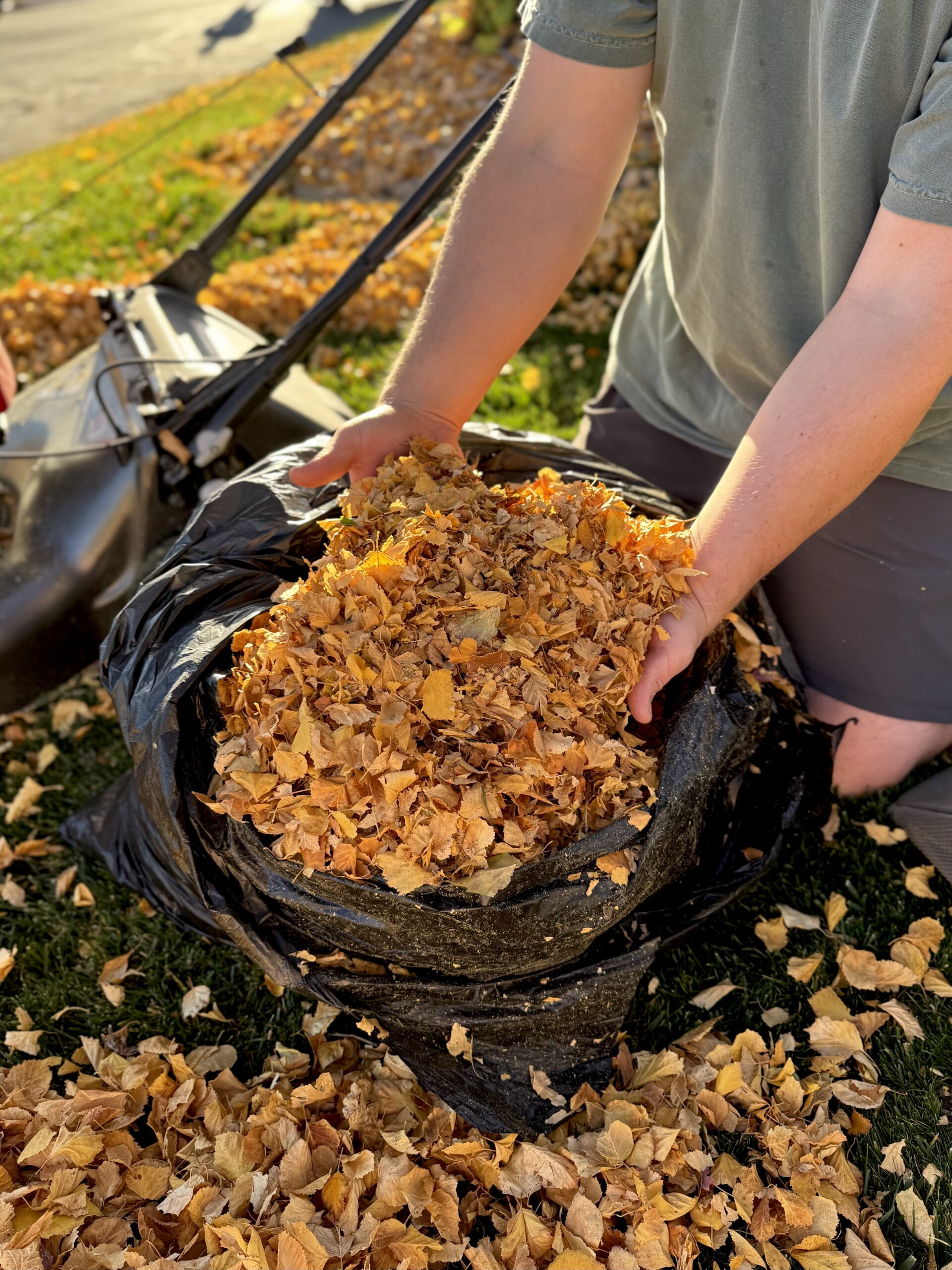
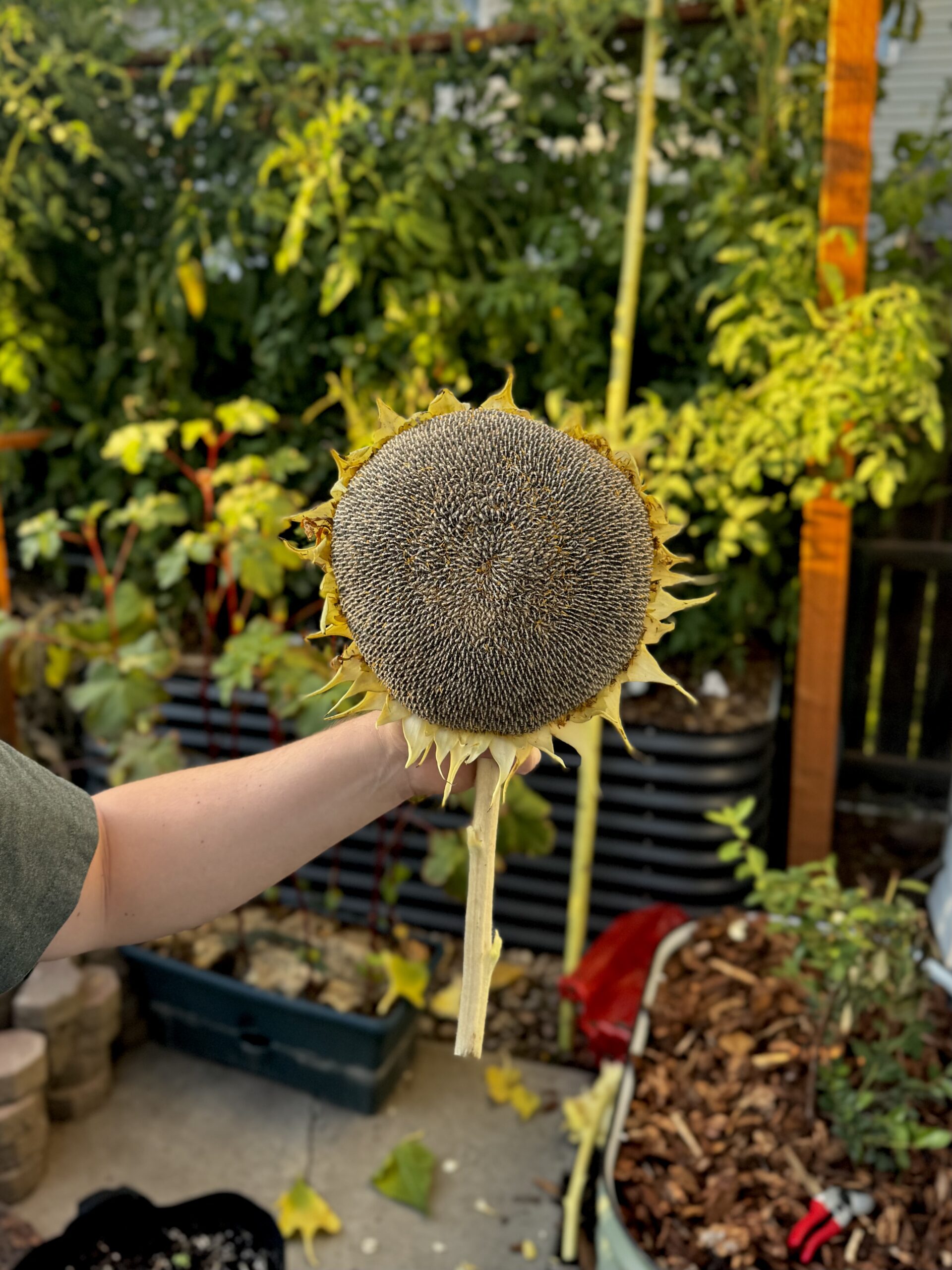

0 Comments